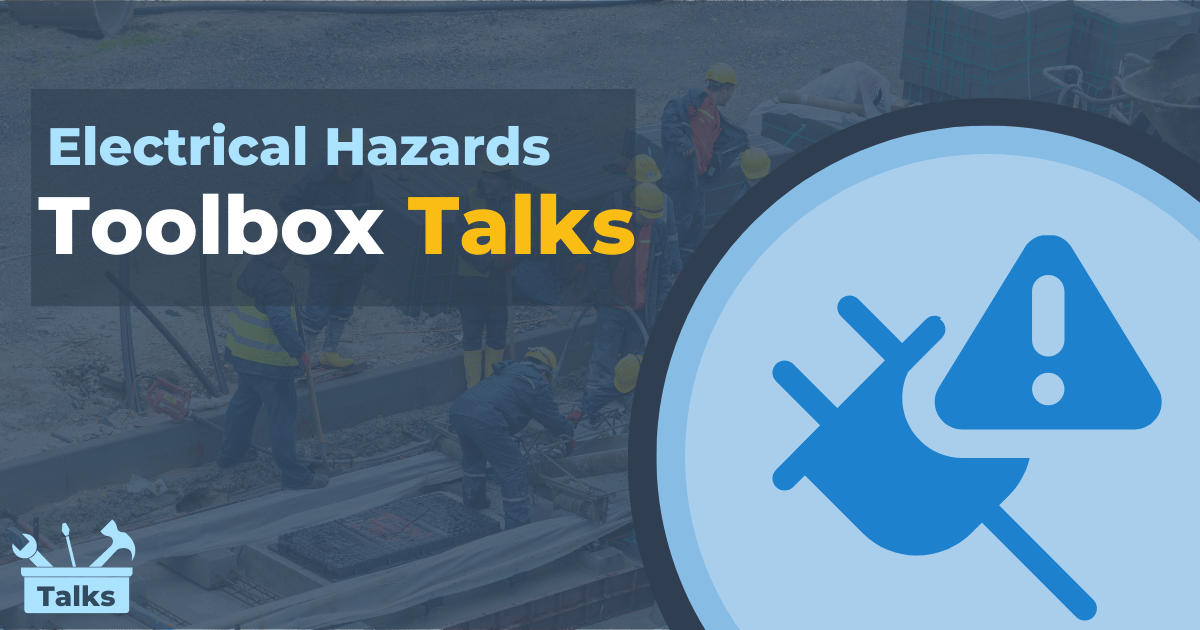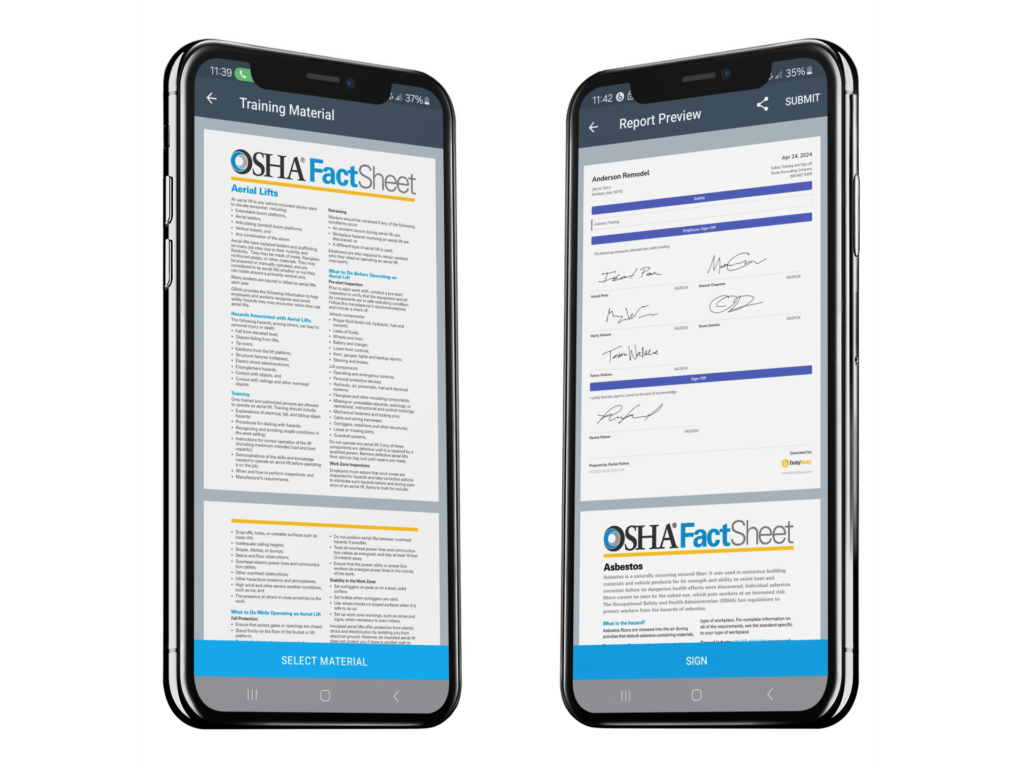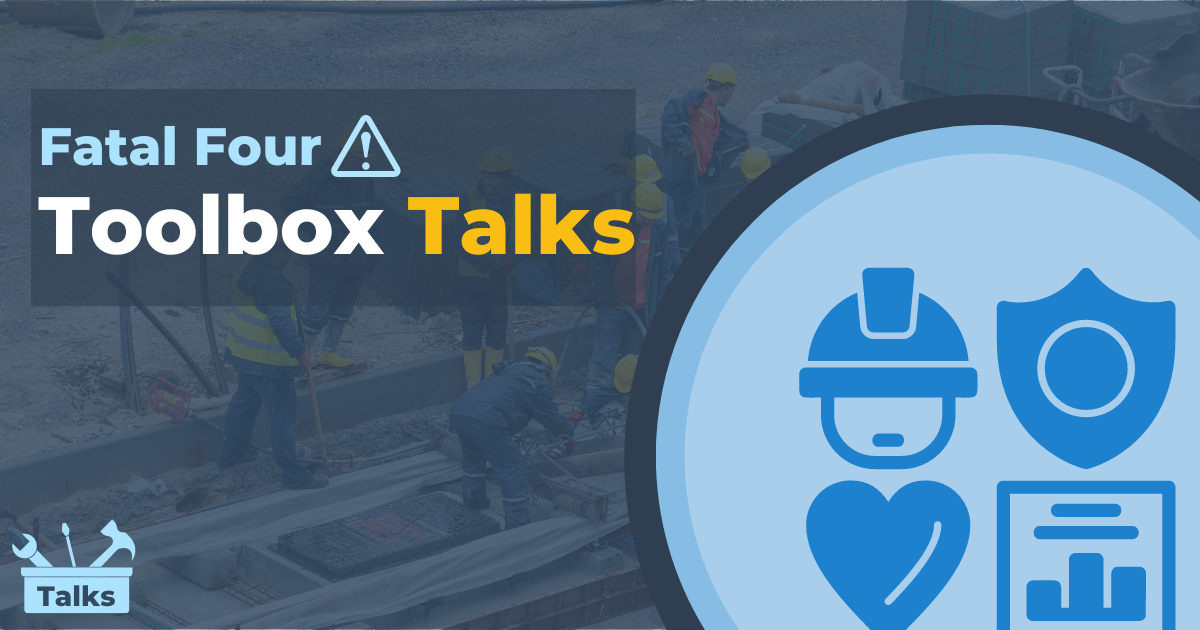
Understanding Electrical Hazards
Electrical hazards on a job site can include things like exposed wiring, damaged cords or equipment, overloaded circuits, and working near power lines. These hazards increase the risk of electric shock, burns, or even fires. It’s crucial to identify and address these dangers to ensure the safety of everyone working around electrical equipment.
Around 4,000 people are electrocuted in the workplace each year.
Given the alarming number of annual workplace electrocutions, it is essential for construction companies to prioritize electrical safety. One effective way to achieve this is by leveraging modern construction software, which can facilitate the exchange of crucial safety information.
By uploading and sharing toolbox talks through an app, employers can ensure that their teams are well-informed and compliant with OSHA regulations. This proactive approach not only enhances worker safety but also simplifies the process of maintaining regulatory compliance. Let’s dive into the specifics of OSHA’s electrical safety regulation, OSHA 1910, which outlines the necessary guidelines to safeguard workers from electrical hazards
Simplified Explanation of Electrical Regulation (OSHA 1910)
This regulation provides guidelines to ensure that electrical work is performed safely to protect workers from electrical hazards. It covers various aspects of electrical safety, including safe installations, equipment maintenance, proper use of tools, and training for workers. The goal is to prevent electrical accidents such as shocks, fires, and explosions by adhering to established safety standards and practices.
Key Training Requirements
Employers are encouraged to provide thorough training programs for employees who may encounter electrical hazards. This program should equip workers with the knowledge and skills to identify electrical hazards and take necessary precautions. Training should cover:
- Understanding the nature of electrical hazards specific to the work area.
- Proper procedures for inspecting and using electrical equipment and tools.
- Roles and responsibilities of employees in ensuring electrical safety on the jobsite.
- Safe handling and storage of electrical equipment and materials.
- Familiarity with relevant safety standards and emergency procedures.
- Implementation and maintenance of an assured grounding program or ground fault interrupter system.
Documentation of training is essential, including records of employee training, dates, and signatures of trainers or employers to verify compliance.
How Employers Can Prevent Electrocutions with Technology
Employers play a critical role in construction safety by implementing measures to protect workers from electrical hazards. This includes thorough training, proper use of safety systems, and regular equipment inspections to identify potential risks.
Construction apps, such as busybusy, facilitate Safety Toolbox Talks and Incident Reporting, making it easier to address the factors contributing in electrical accidents on the job site. While OSHA doesn’t specifically mandate Toolbox Talks, they require employers to provide comprehensive training to educate workers about job hazards and safety practices.
busybusy Time Tracking integrates a Toolbox Talk Library into field reports, allowing supervisors to efficiently conduct safety training using preloaded templates. After the session, supervisors can collect employee signatures directly on their phones.
The Toolbox Talk Library feature from busybusy equips both employees and employers with essential tools to enhance job site safety. By ensuring everyone is well-informed and actively involved in safety protocols, it creates a safer working environment.
6 Common Electrical Hazards
Defective Power Tools: Using power tools with damaged cords or plugs can lead to electric shock.
Defective Extension Cords: Frayed or damaged extension cords pose significant electrical risks.
Overloading Circuits: Overloading switches or bypassing safety features can cause electrical fires or shocks.
Improper Grounding: Failure to ground electrical equipment increases the risk of shock.
Contact with Live Lines: Accidental contact with live electrical lines can result in severe injuries or death.
Power Arcing: High-voltage power lines can arc and make contact without direct touch, posing a severe risk.
Best Practices to Ensure a Safer Jobsite
- Inspect Tools and Equipment:
- Regularly check for frayed cords and defective plugs.
- Never use tools that have had the ground plug removed.
- Safe Operation:
- Avoid operating power tools in wet conditions without proper insulated footwear.
- Keep extension cords out of water when in use.
- Consider all power lines as live and avoid contact.
- Grounding and Electrical Protection:
- Follow the company’s assured grounding/electrical protection program.
- Use Ground Fault Interrupters (GFIs) on all job sites.
- Ensure all electrical tools and cords are disconnected when not in use.
- Confirm all temporary lighting is equipped with bulb covers.
- Marking and Labeling:
- Properly mark all power supplies, circuit boxes, and breaker boxes to indicate their purpose.
Additional Safety Measures
Responsible Personnel: Identify who is responsible for the company’s assured grounding program and the installation of ground fault interrupter systems.
Housekeeping: Maintain clean and organized work areas to prevent tripping hazards and ensure clear paths for electrical cords and equipment.
Emergency Procedures: Establish and practice emergency procedures for quick response in case of an electrical incident.
Conclusion
Prioritizing awareness of electrical hazards and implementing robust safety measures are paramount for safeguarding workers’ well-being on construction sites. By adhering to training requirements, addressing common electrical hazards, and learning from past incidents, employers can create a safer work environment conducive to productivity and peace of mind for all involved. Remember, safety is everyone’s responsibility.









